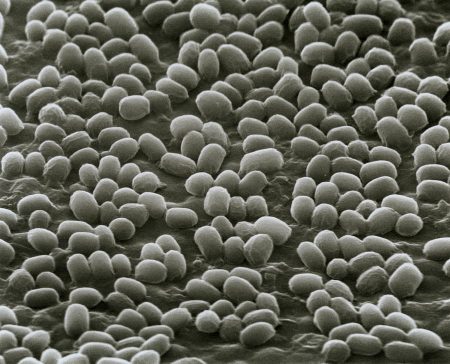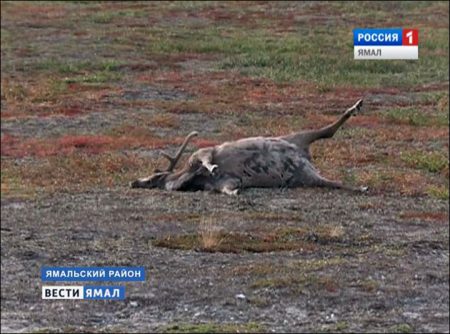May 7, 2017 – In August of 2016, in the Yamal Peninsula, Siberia, a young boy suddenly took sick along with 40 other people. He eventually died and the pathology report indicated anthrax. Where could it have come from? It turns out the anthrax was trapped in the permafrost, in the remains of a reindeer that had died from the pathogen and become frozen 75 years earlier. Released by a heat wave that melted the permafrost in the summer of 2016, the anthrax was very much alive.
This is one example of what may become an even greater problem as Arctic permafrost melts in a warming world. The Arctic is warming at a rate three times faster than the rest of the planet. Preserved within it are microbes and viruses to which modern animals and humans have never been exposed. The reindeer that died is one of many that succumbed to anthrax in the early 20th century.
The agent that caused Spanish influenza, the 1918 pandemic, resulting in more deaths than all those who died on battlefields in World War One, was recently discovered very much alive in corpses buried in Alaskan permafrost. It is likely that permafrost will yield other pathogens as it melts with the biggest concerns smallpox and bubonic plague. Why? Because those diseases were endemic in animal and human populations in Siberia in the 18th and 19th century and can be found in remains buried in Arctic permafrost. One known event, a smallpox epidemic in the 1890s in Siberia wiped out 40% of the people in one town. Their bodies were buried in the permafrost by a river which 120 years later because of flooding from warming is now experiencing erosion.
The unknown diseases of prehistoric populations buried in the Arctic permafrost remain as much a threat as those diseases we do know. Sampling at burial sites has produced viral fragments of both known and unknown origin.
What other bacteria should we fear? Any microbe that can enter a spore hibernation phase requires us to be vigilant. Anthrax is just one that becomes dormant like this, capable of surviving tens of thousands of years. Tetanus and botulism also form spores and will likely be found in the remains of animals and humans as the permafrost melts. And don’t forget the viruses. The latter are far more likely to survive for long periods of hibernation and emerge as infectious agents capable of harming plants and animals.

And as the Arctic melts encouraging tourism, mining and other commercial activities, more humans will transit the polar region or decide to live there. The isolated incident of the Yamal Peninsula anthrax outbreak may become far more commonplace as our Arctic presence grows.
Just how far back in time can viruses and bacteria buried and frozen in the permafrost impact us today?
States Jean-Michel Claverie, an evolutionary biologist at Aix-Marseille University, “The possibility that we could catch a virus from a long-extinct Neanderthal suggests that the idea that a virus could be eradicated from the planet is wrong, and gives us a false sense of security….This is why stocks of vaccine should be kept, just in case.” Claverie found DNA from giant viruses in radiocarbon-dated samples emerging from the Siberian permafrost in 2014 that date back 30,000 years. And in another study, scientists revived bacteria trapped in Antarctic ice core samples dating back 8 million years.
Claverie’s recommendation on retaining vaccines for diseases we once considered extinct makes a lot of sense. But what about diseases caused by microbes to which we and other modern living things have never been exposed?
Climate change is turning out to be far more than a concern about a hotter Earth, rising sea levels, the death of coral reefs, changing weather, and animal and plant extinctions. We now add the threat of prehistoric pathogens which may emerge from what was thought of as permanently frozen ground dating back to the last Ice Age.
















